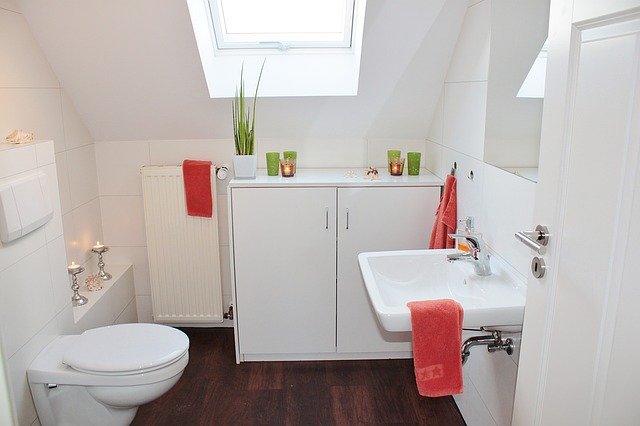Are you looking to enhance the safety and hygiene of your bathroom for your elderly loved ones? A raised toilet seat is a great solution.
It provides comfort and security, making everyday tasks easier for those with mobility challenges. But, like any other bathroom accessory, it requires regular cleaning and maintenance to ensure it remains safe and functional. Imagine the peace of mind you’ll have, knowing you’ve taken a simple yet crucial step to prevent falls and accidents.
We’ll guide you through the straightforward process of cleaning and maintaining a raised toilet seat. You’ll discover practical tips that can help prolong the lifespan of the seat and ensure the well-being of your family members. Dive in, and let’s make your bathroom a safer place.

Credit: eamobility.com
Table of Contents
Choosing The Right Cleaning Products
Pick non-toxic cleaners for a safe cleaning process. These cleaners are good for the environment. They are safe for elderly use. Products with natural ingredients work well. Avoid strong smells. Lemon and vinegar are helpful. They clean well. They are gentle and effective.
Stay away from harsh chemicals. They can harm the toilet seat. Chemicals might irritate the skin. Bleach and ammonia are not recommended. They cause damage to surfaces. Use mild soap instead. It’s safe and cleans properly. Choose products labeled as safe. Always read the label for safety.

Credit: www.amazon.com
Preparing The Toilet Seat
Keeping a raised toilet seat clean is essential for elderly safety. Regularly wipe it with disinfectant to prevent germs. Check for any loose parts to ensure stability.
Removing The Seat
Begin by loosening the screws holding the seat in place. Use a screwdriver for this task. Once the screws are loose, gently lift the seat off. Be careful not to damage the toilet base. Set the seat aside on a clean surface. Keep the screws safe to reuse later. Cleaning is easier with the seat removed. Check the hinges for any dirt or grime. Wipe them clean with a damp cloth. Use a mild cleaner if needed. Dry thoroughly to prevent rust.
Inspecting For Damage
Look over the seat carefully. Check for any cracks or breaks. Inspect the hinges for rust. These issues can affect safety. If cracks are found, consider replacing the seat. Rusty hinges may need lubrication. Ensure screws are not worn out. Replace them if necessary. A safe toilet seat is important for elderly users. Regular checks help keep it secure. Ensure all parts are in good condition.
Step-by-step Cleaning Process
First, take a damp cloth. Gently wipe the seat’s surface. Use mild soap and water. Avoid harsh chemicals. They can damage the seat. Rinse the cloth often. Ensure no soap residue remains. Dry the surface with a clean towel. This helps prevent any water spots.
The underside also needs cleaning. Lift the seat carefully. Use a cloth and mild soap. Scrub gently to remove dirt and grime. Rinse the cloth with water. Wipe again to remove any soap. Dry the area well. This keeps it fresh and clean.
Handles and attachments need special care. Use a disinfectant wipe. Ensure it is safe for plastic. Wipe all surfaces thoroughly. Germs and bacteria hide here. Let the disinfectant sit for a few minutes. Wipe dry with a soft cloth. This ensures safety for the elderly.
Drying And Reassembling
Air drying techniques are important. After cleaning, let the seat dry naturally. Place it in a sunny spot. Sunlight helps kill germs. Make sure it is completely dry. Moisture can cause mold. Use a fan for faster drying. Ensure air circulates well. This helps the drying process.
Reattaching securely is vital for safety. Check the seat’s parts before reattaching. Ensure all screws are tight. Loose screws can cause accidents. Align the seat correctly. Make sure it fits well. Test it before use. Sit gently to check stability. Safety is the top priority. Always double-check your work.
Regular Maintenance Tips
Keep the raised toilet seat fresh and clean. Use a mild soap and warm water. Wipe all surfaces with a soft cloth. Make sure to clean under the seat. Rinse with clean water and dry well. This helps stop germs and keeps the seat safe. Do this once a week for best results.
Look for cracks or breaks on the seat. Check the hinges and bolts. Tighten any loose parts. Replace any broken pieces. This keeps the seat safe and sturdy. A well-maintained seat lasts longer. Always ensure it is safe to use.

Credit: www.ubuy.co.in
Safety Precautions
Gloves keep hands safe from dirt and germs. They stop any direct contact. Use them each time you clean. Wear them before touching the seat. Pick gloves that fit snugly. Loose gloves may slip off. Rubber gloves work best. They protect well and last long. Dispose of used gloves carefully. Never reuse them. This keeps everyone safe and healthy.
Check seat stability often. Make sure it does not wobble. Tighten all loose screws. A stable seat prevents falls. Use brackets if needed. This adds extra support. Test by sitting gently. If it moves, adjust it. Keep the floor dry. Wet floors are slippery. Non-slip mats help too. They keep feet steady. All these steps ensure safety.
Troubleshooting Common Issues
Ensure the raised toilet seat remains clean and safe for elderly use. Regularly wipe the seat with a disinfectant cloth. Check for loose bolts and tighten them to prevent accidents.
Dealing With Stubborn Stains
Stains can be tough. Use a mix of vinegar and water. Scrub gently with a soft cloth. Avoid harsh chemicals. They can damage the seat. Rinse with clean water. Dry completely to prevent new stains. Repeat if needed.
Addressing Loose Attachments
Loose parts are risky. Check screws and bolts regularly. Tighten them with a screwdriver. Ensure the seat is stable. Use washers if needed. They help secure the seat. Inspect weekly for safety. Replace worn parts quickly.
Frequently Asked Questions
How Often Should I Clean A Raised Toilet Seat?
Clean the raised toilet seat at least once a week. Regular cleaning prevents bacteria buildup and ensures hygiene. Use mild soap and warm water for regular cleaning. Disinfect with a suitable cleaner monthly to maintain safety. Always dry thoroughly to prevent moisture buildup, which can lead to mold.
What Cleaning Products Are Safe For Raised Toilet Seats?
Use non-abrasive, mild soap and water for regular cleaning. Avoid harsh chemicals that can damage the surface. Disinfectant wipes or solutions approved for bathroom use are generally safe. Always read labels to ensure compatibility with plastic or padded materials. Test in a small area first to avoid discoloration.
How Do I Maintain A Raised Toilet Seat’s Stability?
Regularly check and tighten any screws or attachments. Ensure the seat is properly aligned with the toilet bowl. Replace any worn-out parts to maintain stability. Clean contact areas to prevent slippage. Consider adding non-slip pads if necessary to enhance safety and security for elderly users.
Can I Use Bleach On A Raised Toilet Seat?
Avoid using bleach as it may damage the material. Bleach can cause discoloration and degrade plastic or padded surfaces. Opt for a mild disinfectant instead. Test any cleaner on a small area first. Ensure proper ventilation when using cleaning products to maintain a safe cleaning environment.
Conclusion
Cleaning a raised toilet seat is crucial for elderly safety. Regular maintenance prevents germs and ensures comfort. Use mild soap and warm water for cleaning. Dry thoroughly to avoid slipping hazards. Inspect the seat for any damage or loose parts.
Replace worn-out parts promptly. Encourage seniors to report issues quickly. A clean seat boosts hygiene and confidence. Prioritize safety with routine checks and cleaning. Simple steps make a big difference. A clean and secure toilet seat supports independence. Always keep elderly safety in mind.






